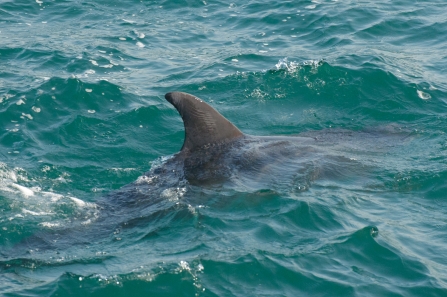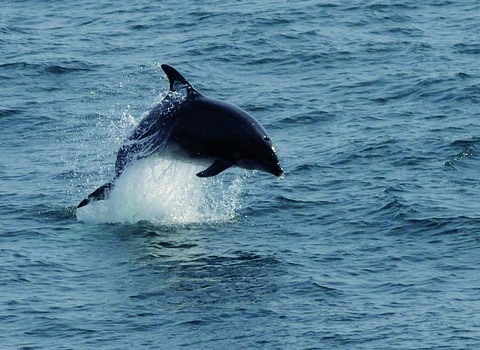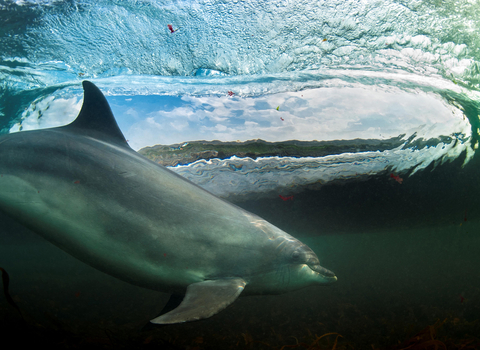Have you seen a bottlenose dolphin in the South West of England? They are amazing creatures. If you would like to help protect and understand them, please take and send us high quality photos!
In the South of England we are lucky to have a resident pod of approximately 40 bottlenose dolphins. Sadly, this pod is in serious threat of decline due to their low numbers, lack of statutory protection and increased vulnerability to disturbance owing to their proximity to human populations. To ensure not only the South coast pod’s survival, but also for the pod to thrive, the best scientific evidence is needed to both support and encourage conservation action.
South Coast Bottlenose Dolphin Consortium
The South Coast Bottlenose Dolphin Consortium evolved in 2022 from the previous South West Bottlenose Dolphin Consortium, when it was appreciated by research partners that this unique pod of dolphins travelled well beyond the coast of Cornwall and Devon. Now sighted as far as Kent, and regularly in Sussex, the South Coast Bottlenose Dolphin Consortium was formed to gather the information needed across this wider geographical range for their protection.
The Consortium continues to collate records and photos of bottlenose dolphin encounters from the public to build on previous research, with reports coming from ferries, marine tour operators, charitable organisations, land-based observers and other interested parties. An amazing amount of information was and is still being gathered for this research, unfortunately highlighting that this small population is at severe risk of local extinction and that much more work is needed for their effective conservation.
With clear photos, like this one, individual dolphins can be identified:

Photo by Dan Murphy
The Research Continues - we need your help!
We are looking for any photographs or sighting reports you may have - new or old - of bottlenose dolphins in the south of England.
Bottlenose dolphins can easily be recognised through their large sickle-shaped dorsal fins as the trailing edge is particularly susceptible to scratches and tears. This tissue rarely regenerates leaving permanent notches and markings which can be used to identify individuals much like our own fingerprints. Photographic encounters can help identify individual animals from these marks which can help us understand not only their distribution, but social structure, seasonal preferences and population estimates. Looking back at historical photos can also help to understand the survival of individual dolphins between years.
However, although all sighting reports are welcome, to ensure we can identify individual bottlenose dolphins we need high-quality photos that are well lit and centred on the dorsal fin. Photographing the whole pod is also very helpful as it can help track which dolphins associate with each other which is important for understanding their social structure.

Bottlenose Dolphin jumping, Image by Adrian Langdon
Keep your distance!
Whilst it is encouraged to look out for and send in photos of the bottlenose dolphins it is an offence to deliberately disturb or harass a dolphin in its natural environment. Keeping this in mind, photographers should keep their distance, allowing any encounter to be on an animal’s terms.
To help those who want to assist with the research, the project team has developed some brief guidance to ensure they can make full use of any sighting reports:
- Know what you’re looking for – bottlenose dolphins are grey all over, rather than being patterned, and measure between 2m and 4m in length;
- Be sure to take clear straight on pictures of dorsal fins as individuals can be identified by markings on their dorsal fin;
- As far as possible, note the precise date, time, and location where the sighting took place;
- It is a criminal offence to deliberately harass dolphins, therefore don’t get too close to the dolphins as it may disturb them and cause unnecessary stress;
- Report your sighting by emailing SCbottlenosedolphins@outlook.com, or through The South Coast Bottlenose Dolphin Consortium Facebook page.
For more info download our bottlenose dolphin factsheet, below:

